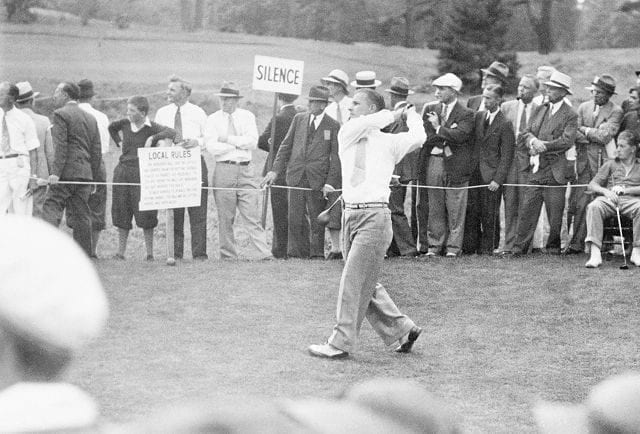Born to Lithuanian immigrants in South Omaha, Nebraska, Goodman was orphaned at the age of 14. Sadly, his mother died when he was 11, after giving birth to her 13th child, and his father later abandoned the family. Goodman became a caddie at the Field Club in Omaha, and while a student at Omaha South High School, he won the Omaha city championship in 1925; four years later, he won the first of three consecutive Nebraska Amateur titles. He won the Trans-Mississippi Amateur three times (1927, 1931, and 1935).
He gained national notoriety at age 19 in 1929 when he defeated Bobby Jones in the first round of match play competition at the U.S. Amateur at Pebble Beach. Looking back, this outcome had a profound effect on the future of golf. Jones, as the defending champion, had the week free as he waited for the finals to present the trophy to the eventual winner. So he spent time at the newly opened Cypress Point Club and created a relationship with Alistair MacKenzie and ultimately choose MacKenzie, insread of Donald Ross, to co-design his future home club in Augusta, Georgia. (Ross was so frustrated by that he resolved to spend much of the 1930s improving Pinehurst No. 2 into the work of art it became.) As a teenager, he and two friends once traveled in the caboose of a cattle train to St. Louis to compete in the Trans Mississippi. They were known as the “Boxcar Trio.”
Interestingly enough, in his first four U.S. Opens, including his 1933 win at North Shore in suburban Chicago, the only amateurs to finish ahead of him were Jones and George Von Elm. Goodman was low amateur in 1932, when he tied for 14th, and also in 1937, when he was eighth.

